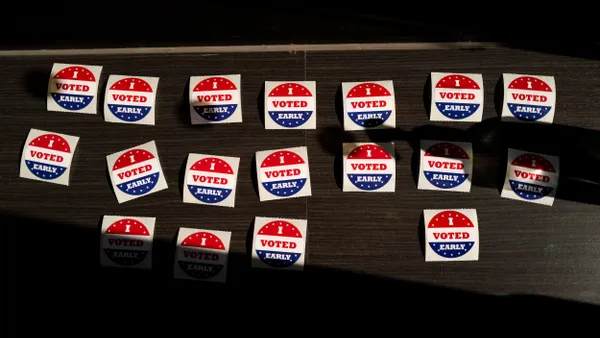As the AI revolution rolls along, employers are looking at what skills their future workforces will need, and how to get from here to there.
And it’s not just a few companies here and there: it’s just about the entire working world. According to a recent report from PeopleScout and Spotted Zebra, about 90% of HR leaders believe that up to half their workforce will need to be reskilled in the next five years.
But what does that actually mean? It depends on the company and the work that needs to be done, but whatever the process, it’s important for employers to keep the employee in mind. That means communicating to them what this future holds, addressing any fears and making sure they’re getting the skills they need as AI adoption continues, experts said.
“When we introduced machinery into agriculture a couple of centuries ago, it changed the work within the farm from one day to the next,” said Helen Poitevin, distinguished VP analyst in Gartner’s human resources practice. “Look at how AI gets introduced in just about every industry, in every workflow. It’s very incremental.”
Teaching employees how to work with AI
Part of that reskilling is helping employees work alongside AI, especially now as it starts to enter more parts of daily life. According to a 2023 Gartner survey, 79% of functional leaders will begin or continue to implement generative AI across the next 12 months.
“When you introduce AI into the way people are working, there’s an immediate need for learning the new ways of working,” said Poitevin.
With that comes addressing fear surrounding the technology, whether concerns about the technology itself, working with it, or that it will be taking their jobs — a fear that’s not unfounded as, in the same Gartner report, leaders said they expect generative AI to reduce head counts between about six and 10 percent.
Just making workers are aware of AI, and the opportunities it offers, “is very low impact, but it’s very easy to do,” Poitevin said.
How — and who — to upskill
Because the technology is still new, and these changes are incremental, it might not be obvious what kind of reskilling employees will need, said Poitevin. It’s important for employers to “set themselves up to monitor and capture the cases where jobs don’t make sense anymore, so they can be redesigned.”
Employers can shift from “thinking about what jobs will go away” to thinking instead about the work that will need to be done, she added.
HR managers should not be identifying current employees for upskilling — or job candidates — solely based on technical know-how, because that’s not necessarily needed to learn new skills to work with AI, said Steve West, head of global talent acquisition at Verizon. “It’s a behavioral element of having the ability to learn, and coachability, that you can adapt to using these new ways of working and not necessarily have to be a programmer to code AI,” he said.
It's also important to keep the person at the center of the process, and consider why this is good for them first. “We’re not upskilling people just to upskill them. We’re upskilling them to ultimately make them better to make us better,” he said. “These are skill areas that are going to be delivering or critical capabilities to drive our strategy.”
Employees want to be reskilled, if employers help them
Actively working with employees can also set an employer apart. That same PeopleScout and Spotted Zebra report found that only 7% of HR leaders noted an active investment in their reskilling program, and 45% said they had no plans to undertake a workforce transformation initiative.
“Skills-based talent strategies are essential, and the clock is ticking for employers across all regions and industries,” Nick Shaw, founder and chief customer officer of Spotted Zebra, said in a statement. “Without future-focused skills strategies for both hiring and development, organizations will suffer lost revenue and productivity when critical jobs are left unfilled.”
Acknowledging the reality that is coming, and preparing workers for it, also can be important in retaining talent. “Pretending like it’s not happening is never good. You can diminish trust,” said Poitevin. “But also encouraging people to focus on what’s to be done and seek out the opportunities in using AI to help make a difference or to work in different ways is key.”














